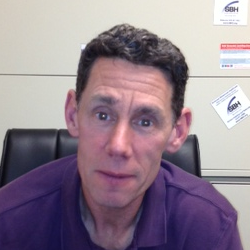What You Should Know About Problem Gambling Posted On
As New Yorkers prepare for more casinos to be built in New York State, many are hearing the phrase “problem gambling” for the first time. People know about alcoholism and drug abuse, but millions of people have never heard of this issue, also referred to as gambling addiction and clinically diagnosed by medical professionals as gambling disorder.
If you are learning about problem gambling for the first time, here are a few basic facts everyone should know.
Problem gambling affects approximate 2 million people nationwide, with another 4-6 million at-risk.
Uncounted are the millions of family members and friends who are hurt by the consequences of their loved ones’ gambling addictions.
Gambling disorder is included in the DSM-5’s “Substance-Related and Addictive Disorders” section.
As it was previously categorized as an impulse control disorder, the reclassification recognizes the disorder among similar addictions such as drug and alcohol abuse and assists professionals who work with insurance providers for treatment reimbursement. Visit our blog post on DSM-5’s definition of gambling disorder to learn more.
Gambling disorder has the highest suicide rate of all addictions.
It’s extremely important that individuals struggling with problem gambling seek help immediately. Emotional, physical and financial consequences can escalate rapidly, leading to depression and despair.
Gambling addiction affects people of all ages.
When you think of gamblers, how old do you picture them? Problem gambling affects people of every age, from adolescents in high school and college students to seniors in retirement.
It is often hard to see the affects of gambling addiction until the consequences are already severe.
It’s called the “hidden addiction” for a reason – many addictions go unnoticed by family members, friends and coworkers even when serious consequences are starting to pile up. Unlike smoking or drinking, gambling doesn’t have a noticeable scent or easily spotted signs. As gambling can happen almost anywhere, it can be done without anyone seeing. If the problem gambler manages the family’s bills, other family members may not realize money is missing for quite some time. It’s important to know the subtle warning signs associated with problem gambling.
Problem gambling is thought to be more prevalent in areas close to major gambling facilities, but forms of gambling are available in communities small and large nationwide.
You don’t have to go to a casino to be able to gamble. Gambling opportunities are available at sports bars, restaurants, community centers and grocery stores. You can gamble at home over the phone or online. You can buy a lottery ticket at the convenience store or bet on a poker game at a friend’s house. It’s extremely easy for the cost of gambling to add up from different gambling opportunities within your neighborhood.
Recovery is possible.
Problem gambling affects many people, but there are many successful recovery stories. If you or someone you know has a gambling addiction, you can have hope and seek help. Call the NYS HOPEline at 1-877-8-HOPENY to reach a professional who can provide counsel and direct you to gambling addiction support options near you.


